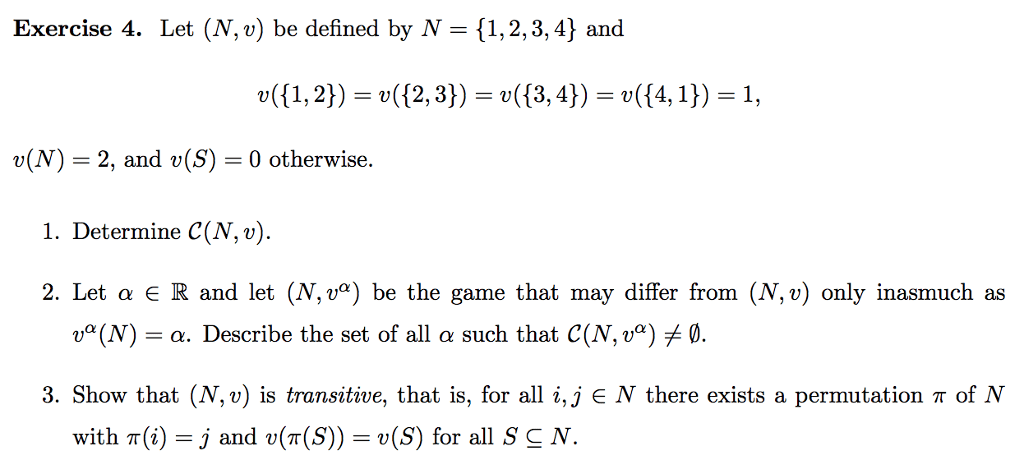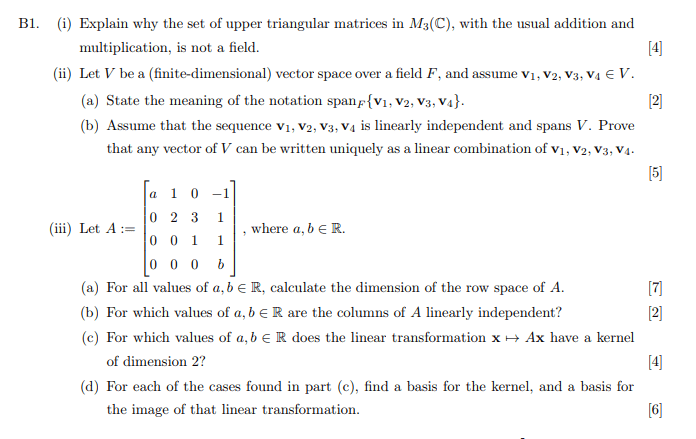MATH136 Study Guide - Final Guide: Parallelepiped, Horse Length, Row Echelon Form

34
MATH136 Full Course Notes
Verified Note
34 documents
Document Summary
Let x , y , z rn, s, t, r r. then. V2: (x + y + z ) = x + (y + z ) V3: (x + y ) = (y + x ) V4: (cid:882) rn, such that x + (cid:882) = x , for any x rn. V5: for each x rn there exists ( x ) rn such that x + ( x ) = (cid:882) . V7: (st) x = s (t x ) Vk } be a set of vectors in rn, we define the span of the set by s = span {v(cid:2869) ,. +tk vk | ti r} we say that set {v(cid:2869) ,. Eg: is the vector x = [(cid:883)(cid:884)(cid:883)] in span {[(cid:883)(cid:883)(cid:883)] ,[ (cid:884)(cid:883) (cid:884)]} [(cid:883)(cid:884)(cid:883)] = c [(cid:883)(cid:883)(cid:883)] + d [ (cid:884)(cid:883) (cid:884)] , c, d r. C + d = 2 spanning set for s.


